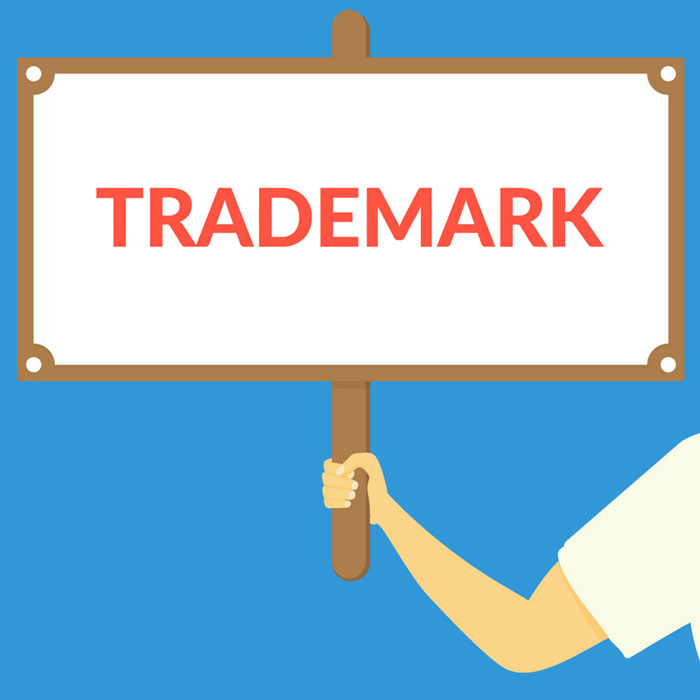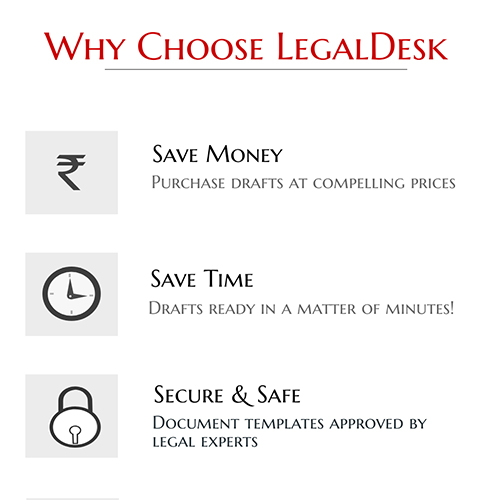Registering A Trademark In India
Trademarks are graphical representations added to a product/service in order to represent its legitimate owners. A trademark may be expressed as a word, a logo, a label used on the product, or anything like shape, size or packaging. They help customers identify the specific products that conform to their unique characteristics and to distinguish them from similar products made by others. Therefore, trademarks need to be protected in order to ensure that others do not misuse them for selling their own products.
In India, trademarks are protected in two ways: through usage and through registration. A person or company that has been using a trademark continuously for a product may be protected under ‘Passing off’ action. Under such action, competitors who try to make fake imitations for passing off their products as a well- identified product can face legal action for doing so. This applies to unregistered marks, while a registered trademark has a better legal protection and can enable the owner to sue for infringement.
How To Register A Trademark In India?
Trademarks in India can be registered under the Trade Marks Act, 1999. The Act sets up an office called the Trade Marks Registry under sections 5 and 6. The registry takes charge of registration of trademarks in India and maintains a register for the said purpose. The register makes a note of trademarks allotted to individuals and businesses in India. The Head Office of the Trade Marks Registry is located at Mumbai. Besides, there are branch offices located at Kolkata, Delhi, Chennai and Ahmedabad.
Registrar Of Trademarks
The registry is headed by The Registrar of Trade Marks, who is also the Controller-General of Patents, and Designs. The registrar is assisted by members like Joint Registrar, Deputy registrars, Assistant Registrars, Examiners of Trade Marks and other clerical staff. Branch offices are headed by either Deputy Registrars or Assistant Registrars. While heading a branch office, they may be delegated some powers of the Registrar.
Register And Indexes
As mentioned earlier, the register is maintained in the head office, while the copies are kept in all branch offices. Besides the register, the registry maintains indexes containing details of the following descriptions:
- Registered trademarks
- Applications for registration
It is recorded since registration may be granted for intended use. So, it would be appropriate to mention applications to avoid fraudulent applications for the same trademark.
- Names of proprietors of trademarks
- Names of registered users
Since trademarks may be licensed, it is important to notify the registry on such licensing in order to ensure that the genuine licensee is allowed to utilise the mark without hindrance.
The registry has been digitised by the Government of India and the contents of the register and indexes are stored electronically.
The Process Of Registration
Given below is the process in which a claim for registration is made under sections 18-24 of the Trade Marks Act.
Eligibility
Trademark registration can be initiated by an individual, joint applicants, partners of a firm, a trust, a Governmental department/undertaking, a Corporation. It is not necessary that a company may be already incorporated in order to register a trademark. The applicant can be a proposed company as well.
Class
Trademarks are allotted to products based on classes. Goods and services are classified into groups by the registrar based on the International Classification for the purpose of registration of trademarks. There can never be two similar marks registered for the same class of goods.
If the goods are of different classes, registration may be refused under section 11(2) of the Trade Marks Act if (1) the trademark already has a reputation in India and (2) the use of the mark without due cause takes unfair advantage or is detrimental either to the repute or to the distinctive character of the registered trademark.
Appointment Of Attorney/Agent
Trademark registration is a complex process involving specialised knowledge and skills. It involves the appointment of attorneys or professional agents who guide the applicants through the process.
Government Fees And Charges
The fees payable to the Government for registering a trademark is Rs 4000. This will be coupled with the attorney/agent’s professional fees payable per application per class.
Preliminary Search And Advice
A preliminary search is the first step to be conducted whether the trademark applied has been granted to any other person. This search can be made at the Trade Marks Registry as well as online.It is recommended that both offline and online search should be conducted. A trademark search is usually conducted by a trademark agent or an attorney who is appointed by the applicant and are specialised in the process. The search may be charged accordingly and may take a few hours.
An advice can optionally be received from the Registrar as to the uniqueness of the trademark. Such advice is however not binding on the applicant.
Trademark Application
Once the required trademark is found to be unique, the next step would involve an attorney or agent creating an application for a trademark. The application includes the proposed trademark and all relevant details.
Once the application is submitted, the proprietor may start using the symbol ™ next to the trademark.
Examination And Objections
The first step after receiving an application for a trademark is that the Registrar causes it to be examined in detail. If there are any objections related to similarity with any registered trademarks, the same shall be communicated to the applicant. If there are any objections raised, the applicant may present his/her case before the registrar either in writing or in a hearing. If the decision is favourable to the applicant, the application is published in the Trade Marks Journal. If not, the applicant may prefer an appeal to the appellate board. Again, the procedure is repeated. The accepted applications are published. It is advisable to go on appeal only if an unregistered trademark has garnered goodwill from continuous usage by a proprietor.
Trademark Registration
The most time-consuming part is the registration, which may range from 18-24 months depending upon the case. If there is no opposition from any other proprietors, the process takes lesser time.
Distinctiveness
In the event of an application being refused by the registrar due to lack of distinctiveness, it is advisable to apply for a fresh trademark. Though there is an option of using the trademark for some years and making a fresh application for the same mark. However, even if it is allotted due to the goodwill it generated because of continuous use, there is always a prospect of being sued for infringement of a trademarkby the proprietor of a similar registered trademark.
Register Your Trademark Through LegalDesk.com
Searching and registering that perfect trademark for your business couldn’t be easier. LegalDesk.com not only makes legal documentation simple, but also assist you with trademark registration service. Your requirements may be diverse, but our solution is unique as you are. If you are a startup, we have a Startup Package in store for you that spans a wide range of essential legal documents. Choose LegalDesk.com today.


